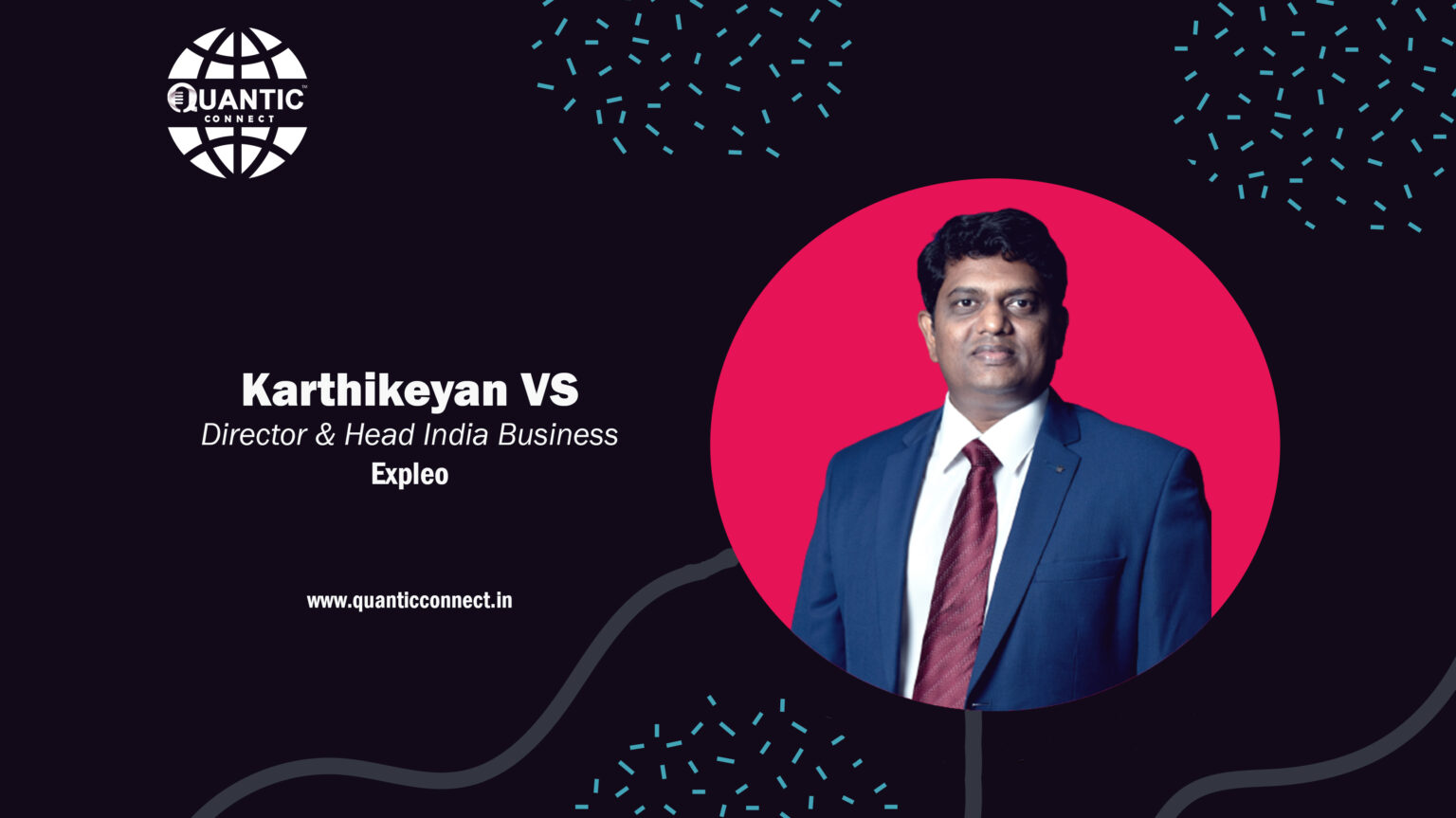Bengaluru, 29th August : In today’s dynamic business world, where success is intricately tied to customer loyalty, creating exceptional customer experiences has become an absolute necessity. Yet, in a digital landscape supercharged by emerging technologies, can businesses foresee what their customers will want next, like gazing into a crystal ball?
With the right business intelligence and approach, absolutely. According to Expleo’s Business Transformation Index 2023, a striking 51% of businesses are focusing on meeting heightened customer experience expectations. However, only 23% believe they are nailing it. So, what sets these frontrunners apart?
Join Marquis Fernandes, Business Head – Quantic India, as he sits down with Karthikeyan VS, Director and Head of India Business at Expleo, to discuss this critical topic. Drawing on the wealth of information from BTI 2023, Karthikeyan puts a spotlight on the strategies that keep businesses ahead of the curve.
Q1. How can technology leaders anticipate futuristic customer demands to enhance retention and loyalty?
While delighting customers with “wow moments” is cool, let’s also realise that customer loyalty and retention hinge on simplicity and convenience. The game now is about creating “effortless experiences.” This means placing the customer right at the heart of all our business moves and fostering a culture that is all about the customer.
As technology leaders, we know that data is the lifeblood of any business. And when we plug this exhaustive data into intelligent tech like AI/ML and data analytics – it’s like deciphering a complex puzzle of customer behaviour and preferences. We can spot trends, uncover patterns, and even craft predictive models that can anticipate what customers will want next. And all of this means we can offer tailor-made products, personalised experiences, and proactive customer service.
For example, in the world of banking and finance, folks are increasingly seeking out mobile-friendly services. Imagine a customer browsing for account options – the “Wow Moment” could be a timely message popping up about hassle-free paperless account opening, something unexpected and delightful. But it’s the follow-through that counts – easy application, chatbot assistance, quick approval, zero paperwork, secure logins, instant transactions, and real-time updates, all contributing to that time and effort-saving, smooth experience. While the initial spark comes from the “wow moment,” it’s the ongoing seamless experiences that truly build a lasting bond between customers and their banks.
Yet, it’s not just about tech – it’s about a shared vision. A unified customer experience plan that spans organisations helps eliminate silos ensuring consistency and cohesiveness throughout the customer journey.
Q2. How do you perceive the importance of quality assurance in business transformation?
In a hypercompetitive marketplace, businesses cannot afford to make mistakes. And in the context of business transformation, quality assurance is like a risk mitigation tool. Think of it as a safety net that catches any hiccups, keeps operations smooth, ensures compliance, and prevents disruptions that can mar the customer experience.
As we transition from legacy systems prone to disruptive outages incurring financial losses, and with the rise in fraudulent activities, a shift from application-level quality assurance to automation across the entire lifecycle is key to addressing these challenges head-on. Automation doesn’t just boost efficiency; it reduces human errors, ensuring a dependable and consistent quality that leads to happier customers. This shift lines up with the larger trend of putting business agility and faster rollout of new capabilities front and centre.
Q3. What skills do digital officers across industries consider having in their teams?
Skills gaps and talent shortage are key barriers impeding business transformation progress. Per our BTI 2023, 77% of companies acknowledge a lack of skills and experience in managing key emerging technologies like AI and ML. So, when it comes to building the dream team, we must bridge the gap by exploring synergies with strategic partners.
Embracing diversity and inclusion brings in a mix of unique viewpoints that really amp up our ability to solve problems and get creative. We can make sure our teams keep growing and learning with strong training programs, so they’re always up to speed on the latest tech developments. And automation? That’s a game-changer too. It gives us the flexibility to scale up quickly and adapt to whatever curveballs the market throws our way.
Collectively, these skills empower digital teams to create a harmonious blended workforce for unlocking success in an increasingly complex and connected enterprise.
In a world where customers set the tone, technology shapes the moves, and quality seals the deal, Karthikeyan’s insights shed light on the pivotal role of customer-centricity, data-driven strategies, and a skilled workforce in anticipating futuristic customer demands and ensuring quality in business transformation. In a digital-first environment, as technology leaders, our responsibility extends beyond the present moment – we have to foresee what our customers will want in the future and be ready to deliver. It’s all about making things easy for customers – that’s what keeps them coming back for more.
To know more about us / publish your article here reach us at
www.quanticindia.com
marquis@quanticindia.com



